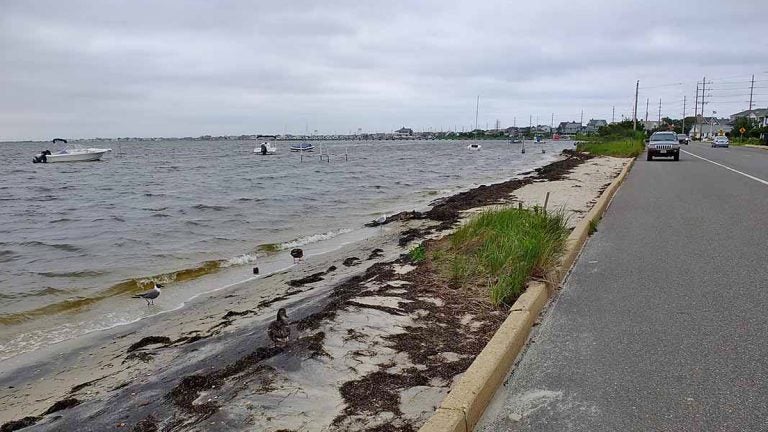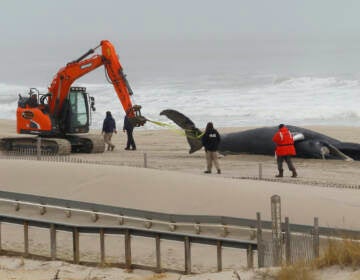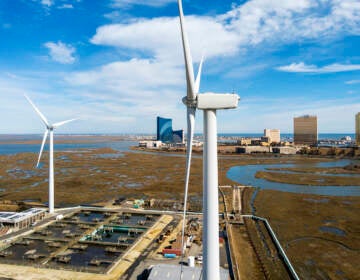Without protection, N.J.’s flood-prone back bay towns risk $1.5 billion damage annually
Study suggests a variety of ways to reduce back bay flooding: storm surge barriers, levees, floodwalls, building lifts, living shorelines, and reefs.

Barnegat Bay on a normal day is almost at the street level in Seaside Heights, NJ. (Alan Tu/WHYY, file)
A new study predicts that back bay areas along New Jersey’s coastline could incur billions of dollars in property damage over 50 years if nothing is done to protect them.
The study, conducted by the Army Corp of Engineers with funding from the state Department of Environmental Protection, assessed the flood risk to back bay towns and suggested ways to bolster them against damage caused by future storms.
Officials calculated the value of property in New Jersey’s 84 back bay municipalities and projected how much storm damage could occur over the next half-century. They then predicted that those areas would incur an average of $1.57 billion in damage per year.
“That’s what we call a drain on the national economy, and that’s why the federal government is interested in studying that and looking at different ways of preventing that from happening,” said Peter Blum, chief of planning for the Corps’ Philadelphia district.
Back bay areas should not expect to pay that exact amount each year, since it is an average. Some years would have major storms like Hurricane Sandy, while others would experience minimal flooding, Blum said.
The study suggested a variety of ways to reduce back bay flooding that are similar to those used to protect oceanfront properties: storm surge barriers, levees, floodwalls, building lifts, living shorelines, and reefs.
“We’ve identified lots of solutions — not just the problems,” Blum said. “Now we’ll be spending the rest of the study honing in on maximizing a solution or coming up with the one that’s most economical” to a given area.
Experts say planning for future storms will take a flexible approach that accounts for the low and high estimates of sea level rise.
“[For] some places, there are going to be clear engineering solutions,” said Robert Kopp, director of the Institute of Earth, Ocean & Atmospheric Sciences at Rutgers University.
Kopp said New Jersey could see sea levels rise anywhere from 2 to 8 feet by the year 2100.
“Other places, we may need to think about how we gradually transition people to safer locations over the course of several decades,” he said.
WHYY is your source for fact-based, in-depth journalism and information. As a nonprofit organization, we rely on financial support from readers like you. Please give today.




